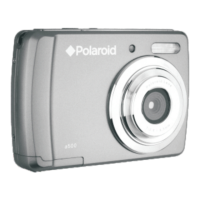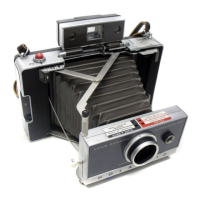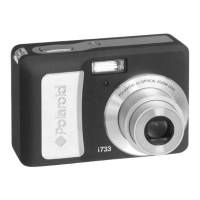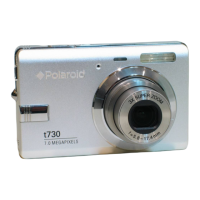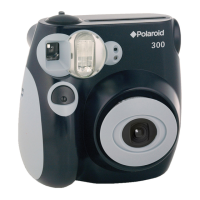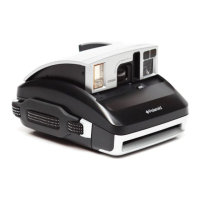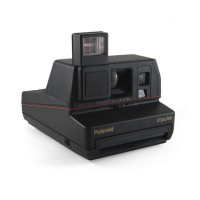RIGHT
~~~~~~.(~t--W'G'\T"VEL'NS
r
!-.".fBI/!'
LENS
"\
<:
,
LEFT
:>
I
RANGEflNOEA
FlANG€FINDEA
WINOOW
WINOOW
8EAMSf>UrrER
y,
•
);ff-
ASSfM8k
y
H
7
R"
EY~E
MOVI>,BLE
WINDOW
~
IMAGE
I
I
FIXED
IMAGE
L
.J
FIG. 2.8 POLAROID RANGEFINDERIVIEWFINDER
INTERNAL
CONFIGURATION
6
up
or
down. pointing
to
the
inC'rem~n(~
of
the
dis-
lilll~l"
sCilll",
Whl"n
thl"
OIrrow
is
<It
the distance
mark
l"Slim;Jll"d
as being the
actu<l1
distance
bl"tw!!!!n
L'Zlm!!rll
und subject. the
diamond
frJme
il'i
adjusted
to
indude
only
that
area which will
be visible
in
the finished print. The .coupling
bdween
the image sileT and
shutter
housing
gu.mmtees
that
the lens will be set
at
the
appro--
prialedistance
from
the
film piane.
Two
methods
can
be
employed
when using
the
image sizer.
The
distance
between cam!!r3
and
subject can
be
estimated beforehand
and
the
focus
buttons
adjusted
until
the
movable
arrow
is set
at
the corresponding
figure
on
the
scale.
For
many
shots.
the
second
method
can
be
used,
This requires
that
the
subjects'
face
be
framed
between the fixed line
and
the movable arrow.
To
do
this. the fixed line is set
a1
the
lop
of
the
subjec1s' forehead
and
the focus
burtons
are
adjusted untH the movable arrow is set
at
the
boHom
of
th~
chin. (W.th sman
children,
the
enlire head should
be
framed.) When
this
is
done,
the
camera should
be
properly
focused for
thai
parricular
shOL
Polaroid Ran.sefinder/Viewfinder
The
Polaroid rJngefinder/viewfinder
jRF/VF)
b
used
on
the
greatest
number
of
models
in
the
<It1tomatk
paL'k
carner
.. fine. In the Model 100.
101, 102, 103, 135, 240, 230, and
340
cameras,
the
RF/VF
can
be
folded
down
when
the
unit
is
not
being
used. In
the
Model
225.
220,
335.
330,
and
320
cameras, the
RF/VF
cannot
be folded.
Howc¥er,
both
types
of
RF/VF
models
operate
in
the
same
way.
Viewfinder (See Figure
2--8)
The
image projected
to
the
viewfinder
eye
win-
dow
comes
directly
through
the
optics assembly
from
the viewfinder window, The
optics
assem-
bly consists
of
negative
and
positive lenses.
Albada
iines~
wttich are
used
to
frame
the
subject.
are
painted
on
tbe
positive lens,
The
entry
of
incident
light reflects these
Jines
off
the
negatjve
lens,
The
ret1ection
of
the
lines is
what
is actually
visible
in
the
viewfinder eye window.
As
the
camera is focused. the
entire
optics
assembly tilts,
causing
th_e
Albada line frame
to
move. Focusing
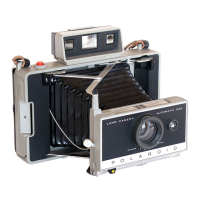
